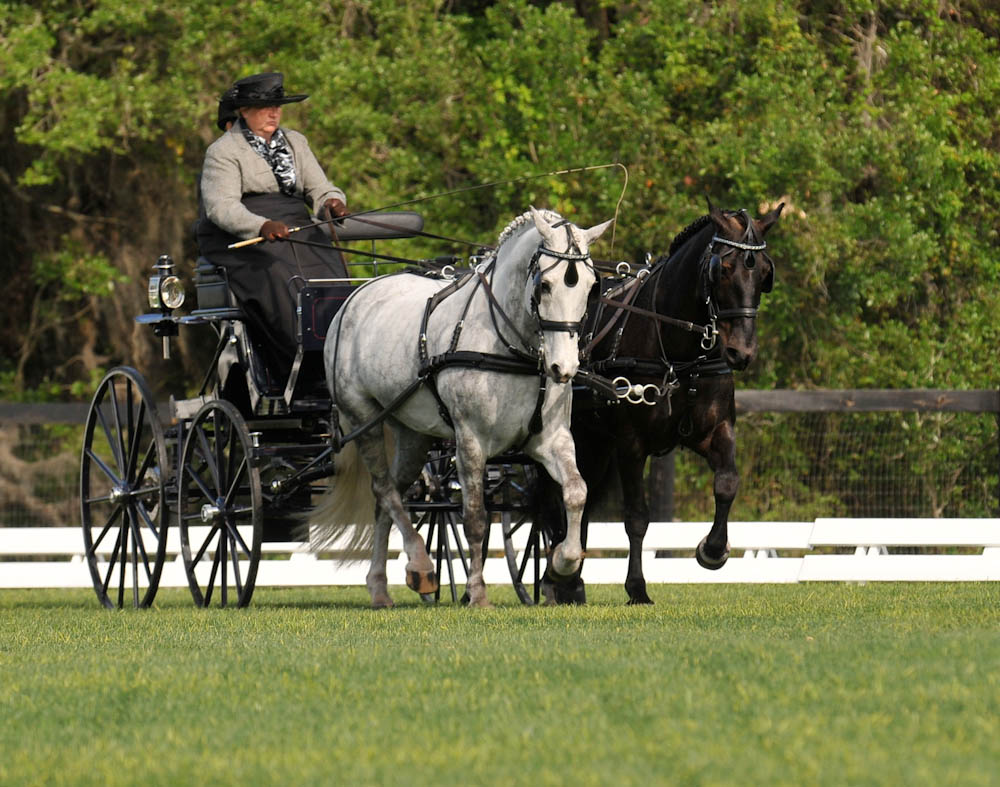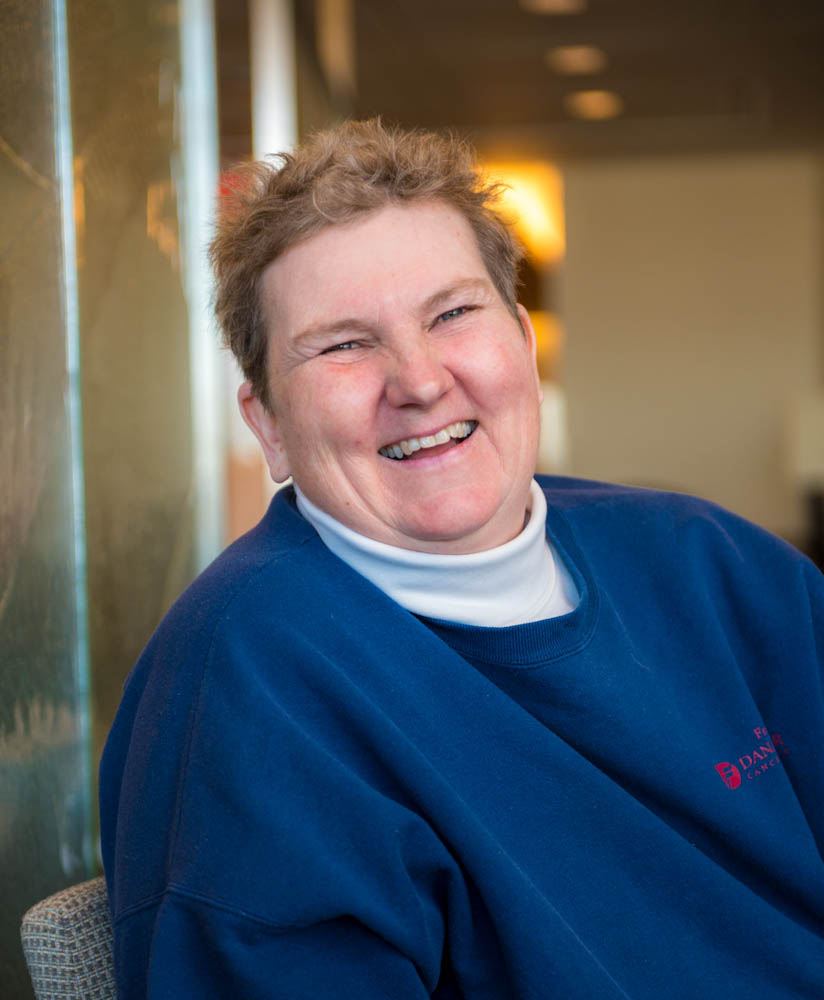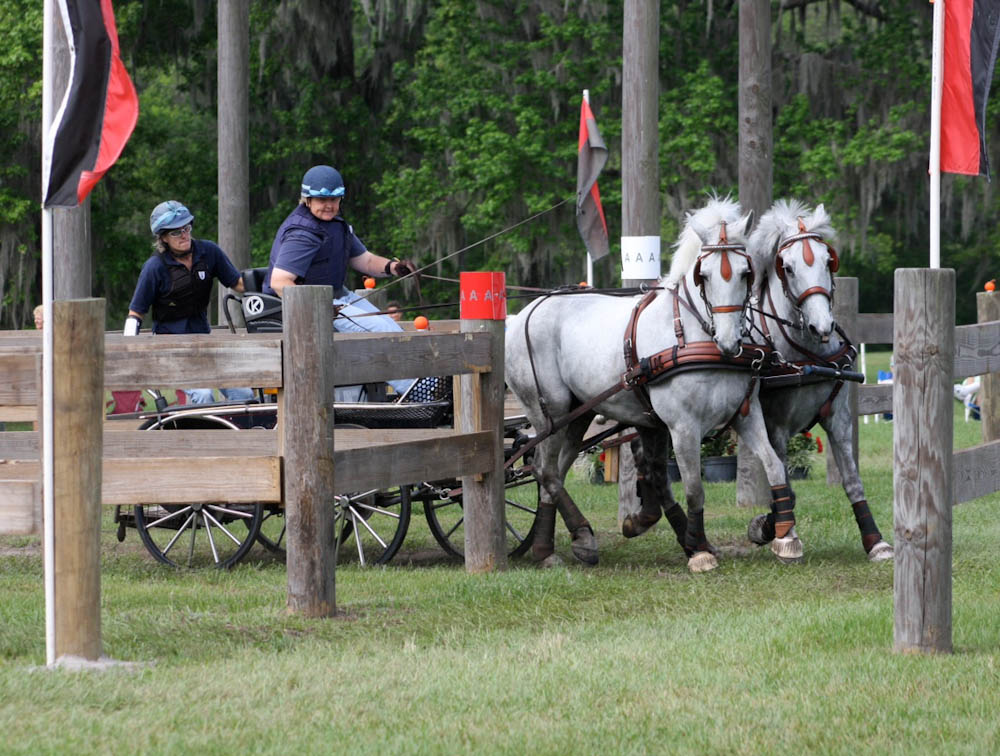Every day, Pat Hastings is in the barn by 5 a.m. As steward of the Hamilton Rare Breeds Foundation in Hartland, Vt., Hastings oversees herds of Poitou donkeys, Choctaw mustangs, Dales ponies, and American Cream draft horses.

She has worked on farms for 35 years, and it’s here, with her horses, that she recovers from treatments for metastatic breast cancer. “Animals and farming are in my blood,” she says.
First diagnosed with inflammatory breast cancer in April 1998, Hastings had a radical mastectomy at a hospital near her home in Vermont. Eleven years later, she felt a lump in the other breast and was diagnosed with HER2-positive breast cancer.
“Breast cancers are classified as HER2-positive if their cells have too many copies of the human epidermal growth factor receptor gene which allows them to grow and divide,” says Nancy Lin, MD, clinical director of Breast Oncology in the Susan F. Smith Center for Women’s Cancers at Dana-Farber, and Hastings’ doctor. The standard treatment is surgery followed by chemotherapy and the targeted breast cancer drug trastuzumab (Herceptin), and also often includes radiation treatment.
After a second mastectomy, Hastings flew south to be with her horses, which she shows up and down the east coast.

She returned to Dana-Farber/Brigham and Women’s Cancer Center (DF/BWCC) eight weeks later to begin treatment. But before she could start, tests revealed that the cancer had spread to her liver. While metastatic breast cancer is generally not curable, treatments are can keep the cancer at bay, at least for periods of time. For the next eight months, she received chemotherapy and Herceptin, traveling to and from DF/BWCC in Boston every Monday – a two-hour drive from her home in Vermont.
About a year later, when Hastings began stumbling, an MRI showed that the cancer had spread to her brain stem. She began six weeks of radiation at a facility in Vermont, which shrank the tumors until they were tiny.
“Throughout my treatment, I could still run the farm and show my horses, and that was so important to me,” says Hastings.
The tumors in her liver are gone, and she comes to Boston every three weeks for Herceptin alone. “The antibody, which interferes with the HER2 receptor, gives a better quality of life without the side effects of chemo,” Lin explains. She adds that since Hastings’ diagnosis, new treatments have come on board for patients with HER2-positive breast cancer, and these will be options for her in the future should she need them.
Hastings’ disease has not become active again – a remarkable response that researchers at Dana-Farber and the Broad Institute of Harvard and MIT are studying, says Dr. Lin.

Back in Vermont, Hastings works on her farm seven days a week. “I don’t even think about it,” she says of her illness. “People who know me say, ‘don’t you have cancer?’ I am so busy caring for the horses that I don’t have time to worry. Dana-Farber gives me the best chance to live a long life.”
On the farm in the early morning, as the sun crests the horizon, Hastings finds comfort in the absolute stillness and solitude. A new day has begun.
This story originally appeared in Dana-Farber’s 2015 issue of Turning Point. Read more from the 2015 issue.
